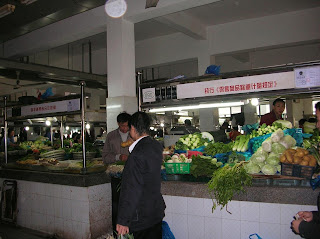Chinese rebels attacked Shanghai the Taiping Rebellion of 1860 and the Boxer Rebellion in 1900. General Chiang Kai-shek's troops besieged the city in 1927. The Japanese fought the Chinese in 1932 and destroyed large parts of the Chinese City. It was rebuilt but destroyed again by the Japanese in 1937. Japan occupied the city in 1941 until the end of World War II. During the war the British and the Americans gave up their privileges. After the surrender of Japan in 1945, the Chinese took over, and the French gave up their concession in 1946. Shanghai declined after the Communist took over in 1949.
Arriving at Shanghai International Airport after an overnight flight from Chicago
At the hotel our tour group had a meeting with our guide
Modern Shanghai
The Nanking Road separates the skyscrapers from the Peoples' Park
China's largest banks lined the city's waterfront, called the Bund, hotels and office buildings give it a modern skyline. The International Settlement was built along the Whangpoo River. The French Concession has many fine residencies, smaller office buildings and shops. The municipality of Greater Shanghai, incorporated in 1928, surrounded the International Settlement and French Concession.
View of the city at sunset from the hotel
Across our hotel is a gymnasium for Olympic hopefuls and grocery stores.
The busy Bund

Shanghai Museum


Yu Yuan Garden (Old Shanghai)

Textiles account for about two fifths of the city's manufactures. Other industries include cement, soap, publishing, ship-building, and sugar refining.
A visit to a local market
Internet Publication:
6/12/10 lib's labyrinth blogspot
11/2006 ALT MSN Group



























No comments:
Post a Comment